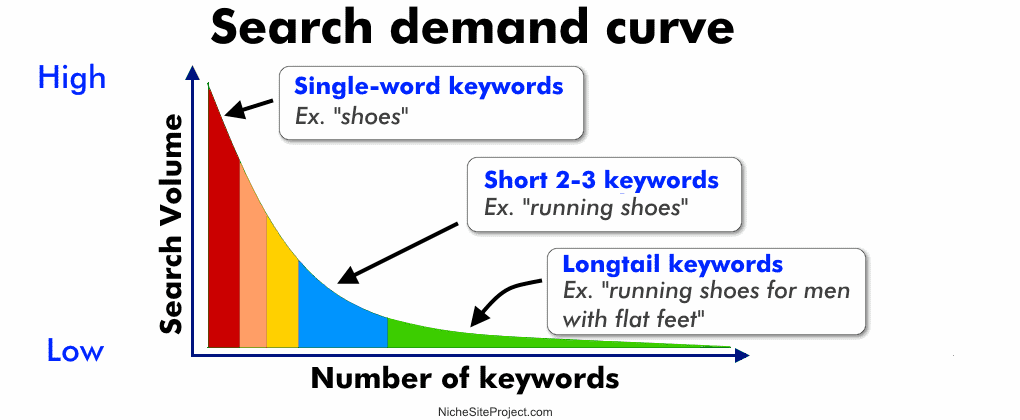The Benefits of Long-Tail Keywords in Digital Marketing
In the fast-changing world of digital marketing, long-tail keywords have become a powerful tool for reaching the right audience. These keywords are longer, more specific phrases that people use when they know what they are looking for. While short keywords like “marketing” or “SEO” may get more searches, long-tail keywords such as “best digital marketing tips for small businesses” bring more focused traffic.
Using long-tail keywords in your content, ads, and SEO strategy can make your business more visible to the right people. They not only improve search rankings but also help you connect with audiences who are ready to take action. Let’s explore the many benefits of long-tail keywords in digital marketing and how they can transform your online strategy.

What Are Long-Tail Keywords?
Long-tail keywords are keyword phrases that usually contain three or more words. They describe a specific topic or intent. For example, “eco-friendly travel gear for women” is more detailed than “travel gear.” The name “long-tail” comes from the shape of the search demand curve, where these specific searches make up the long tail of less common but highly targeted queries.
They may not bring massive traffic individually, but combined, long-tail keywords make up most online searches. Because they are detailed, they reveal what people truly want. This helps digital marketers create content that matches real needs instead of guessing what users might search for.
Why Long-Tail Keywords Matter in Digital Marketing
Long-tail keywords matter because they improve both visibility and relevance. In digital marketing, relevance is everything. It ensures that your website or ad appears to the right person at the right time.
When you use long-tail keywords, you speak directly to someone’s specific search intent. For example, a person searching for “affordable safari tours in Namibia” already knows what they want. This is different from someone just searching “safari.” The first person is likely closer to booking, while the second may still be exploring ideas.
Therefore, long-tail keywords help businesses attract qualified leads — people who are more likely to convert into customers. Long-tail keywords should always form part of a wider strategy. Long-tail keywords help businesses attract qualified leads because they match what users really want. Learn more about understanding search intent from Think with Google.

Easier to Rank for Long-Tail Keywords
Ranking on search engines is competitive. Trying to appear on the first page for broad keywords like “digital marketing” can be almost impossible, especially for small or new businesses. However, long-tail keywords have less competition.
Search engines reward content that matches user intent. Since fewer websites target these specific phrases, your chances of ranking higher increase. Even though each long-tail keyword brings fewer visitors, the combined traffic can be strong and steady.
For instance, ranking for “best social media strategy for travel companies in Africa” may be easier and more profitable than trying to rank for just “social media strategy.” Over time, this builds steady traffic from people who are genuinely interested in your topic.
Search engines reward content that matches user intent. To understand how search engines determine rankings, see Google’s guide on how search works
Long-Tail Keywords Bring Better Quality Traffic
Not all website visitors are equal. You might attract a thousand visitors a day, but if none of them take action, your efforts are wasted. Long-tail keywords help solve this problem by bringing more focused traffic.
People who search using long-tail keywords already have a clear idea of what they want. They are often in the later stages of the buying journey — researching details, comparing options, or getting ready to purchase.
For example, someone searching “buy eco-friendly safari gear online” is ready to act. That search is far more valuable than a general query like “safari gear.”
When you align your digital marketing strategy with long-tail keywords, you attract people who are already interested in your product or service. This increases engagement and conversion rates.
Higher Conversion Rates with Long-Tail Keywords
Because long-tail keywords match specific intent, they lead to higher conversion rates. The person searching for “best family safari tours in Botswana” is more likely to make a booking than someone searching “safari tours.”
When people find exactly what they are looking for, they trust your website more. This trust encourages them to take the next step, whether it’s signing up, purchasing, or contacting your business.
In digital marketing, higher conversion rates mean better return on investment (ROI). You spend less on ads or content while getting more valuable leads.
Long-Tail Keywords Support Voice Search
Voice search has changed how people use search engines. More people now ask digital assistants questions like, “Where can I find affordable lodges in Kruger National Park?” rather than typing “Kruger lodges.”
This shift makes long-tail keywords even more important. Voice searches are naturally longer and more conversational. By using long-tail keywords in your content, you align your brand with how people actually speak and search.
For example, adding natural phrases like “how to plan a safari on a budget” helps your site appear in voice results. This can increase your visibility and traffic from mobile and voice devices. Voice search continues to grow, and understanding it can boost visibility. Explore more in our article on how voice search is changing online marketing.
Long-Tail Keywords Improve Content Strategy
Creating content around long-tail keywords allows you to target multiple specific topics. Each keyword gives you insight into what your audience wants to know.
If you run a travel business, you might target long-tail keywords like:
- “best safari destinations for couples”
- “affordable guided tours in Namibia”
- “how to prepare for a camping safari in Botswana”
Each of these phrases can become a blog post, video, or social media topic. Over time, you build a library of helpful, focused content that serves your audience. This not only improves SEO but also builds trust and authority.
Once you find the right long-tail keywords, the next step is crafting content that connects. Read our top content marketing tips for 2025 to learn how.
Creating content around long-tail keywords allows you to target multiple specific topics. For additional strategies, see SEMrush’s guide on long-tail keywords
Lowers Advertising Costs
Paid advertising platforms like Google Ads or Meta Ads often charge more for broad, competitive keywords. Long-tail keywords, on the other hand, are cheaper and more efficient.
By targeting specific phrases, you reduce your cost-per-click (CPC) while increasing your chances of reaching ready-to-buy customers. For example, instead of bidding on “safari tours,” you might use “3-day guided safari tours in Kruger National Park.”
Even though search volume is lower, the people who click are more likely to book. This improves your ad performance and reduces wasted spending.
It Helps to Build Stronger Customer Relationships
Using long-tail keywords helps you connect with your audience on a deeper level. Because you address their exact needs, your content feels more personal and useful.
For example, a blog about “best family-friendly safari lodges in Namibia” shows that you understand what families need — safety, comfort, and fun. This builds trust and loyalty.
People prefer brands that listen and respond to their needs. When your marketing uses long-tail keywords effectively, you show empathy and understanding — qualities that strengthen relationships.

They Work Well for Local SEO
Local businesses benefit greatly from long-tail keywords. People searching for services nearby often use detailed phrases, such as “digital marketing agency in Cape Town” or “vegan restaurant in Windhoek.”
These searches include both location and intent. Optimizing for local long-tail keywords helps your business appear in map results and local listings. It also drives nearby customers who are ready to act.
Local SEO combined with long-tail keywords is one of the easiest ways to improve online visibility without competing against global brands. For more insights on optimizing for nearby audiences, check out our guide on what local SEO is and why it matters.
Long-Tail Keywords Increase Content Variety
Digital marketing thrives on diverse content. Long-tail keywords help you find new angles and topics. Instead of repeating the same short keyword across all posts, you can explore detailed questions, comparisons, and solutions.
For instance, if your core keyword is “digital marketing,” long-tail variations might include:
- “digital marketing strategies for tourism companies”
- “how to improve SEO for small travel blogs”
- “affordable online marketing for startups.”
Each variation provides new ideas for blog posts, videos, infographics, or newsletters. This keeps your audience engaged and your content fresh.
Long-Tail Keywords and SEO Tools
Finding long-tail keywords has become easier thanks to SEO tools like Google Keyword Planner, Ubersuggest, and SEMrush. These platforms show search volume, competition level, and keyword suggestions.
By studying what people are searching for, you can discover new opportunities. You might notice, for example, that “sustainable safari experiences” or “luxury lodges in Etosha National Park” are trending searches.
Including such long-tail keywords in your strategy helps you stay ahead of competitors while meeting current audience interests.
Long-Tail Keywords Strengthen Brand Identity
Using long-tail keywords allows your brand to speak in a consistent and authentic voice. Each keyword reflects a small piece of your brand story.
If you consistently target keywords that relate to your values — such as “eco-friendly travel,” “community-based tourism,” or “inclusive safari experiences” — you show what your company stands for.
This builds recognition and trust over time. People begin to associate your brand with specific values and expertise.
Combining Long-Tail Keywords with Other Strategies
Long-tail keywords work best when combined with other marketing tools. You can use them in blog posts, website pages, video titles, ad campaigns, and even social media captions.
For example:
- In blogs, use them in headings and body text to boost organic traffic.
- In ads, use them to target highly specific audiences.
- On social media, include them in captions or hashtags to improve discoverability.
- In email marketing, include them in subject lines that reflect your readers’ interests.
This consistent use strengthens your SEO and makes your brand message more coherent.
The Future of Long-Tail Keywords
Search engines are becoming smarter. They now understand context and natural language. This means long-tail keywords will continue to play a major role in SEO and content marketing.
As users rely more on voice assistants and AI search, detailed and conversational phrases will dominate. Businesses that adapt early will have an advantage.
Long-tail keywords will not only help with visibility but also shape how brands create personalized experiences. They guide content, tone, and communication style.
Final Thoughts
Long-tail keywords are not just a small SEO tactic — they are the heart of a smart digital marketing strategy. They help you attract the right audience, lower costs, and build real connections.
While short keywords bring visibility, long-tail keywords bring value. They ensure your message reaches people who are ready to engage, trust, and buy.
By focusing on long-tail keywords, your business can compete more effectively, create meaningful content, and achieve lasting growth in the digital world.
So, next time you plan your marketing strategy, think beyond short phrases. Use long-tail keywords to unlock the full potential of your brand online.



